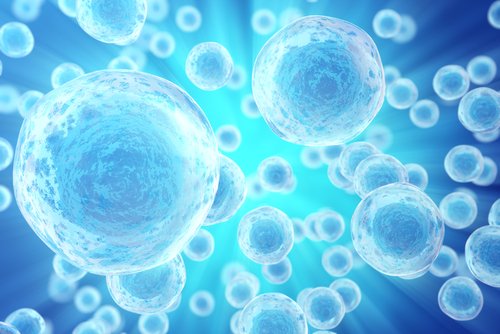Stem-like Th17 Cells May Lead to New Therapeutic Approaches for MS, Other Autoimmune Diseases, Study Suggests
Written by |

An altered metabolism and signaling is associated with the ability of a subset of immune T helper 17 (Th17) cells to induce neuroinflammation, according to a new study of mice.
The findings may lead to new treatments for multiple sclerosis (MS) and other chronic inflammatory diseases, the scientists said.
The research, “Metabolic heterogeneity underlies reciprocal fates of Th17 cell stemness and plasticity,” was published in the journal Nature.
Th17 cells have pro-inflammatory properties, and have been associated with autoimmune diseases such as MS, inflammatory bowel disease, and rheumatoid arthritis. They also are involved in the immune system’s defense against fungal and bacterial infections. Although these cells’ plasticity, or adaptability, is well-known, researchers still do not know how such plasticity is regulated.
Using the experimental autoimmune encephalomyelitis (EAE) mouse model of MS, a team from St. Jude Children’s Research Hospital found that Th17 cells are functionally and metabolically heterogeneous (diverse).
Join the MS forums: an online community especially for patients with MS.
They can be divided into two subsets based on different levels of the CD27 cell differentiation marker, and expression of the TCF-1 and T-bet transcription factors — tiny proteins that regulate protein production. One of these Th17 subsets has stem cell-associated features but lower metabolism, while the other subset has higher metabolic activity and supports differentiation into Th1-like cells (cells with a pro-inflammatory profile).
The team further found that signaling via the mTORC1 protein complex regulates cell metabolism and gene expression, being a central regulator of Th17 cell fate decisions.
Th17 cells with disrupted mTORC1 signaling or with lower metabolic activity failed to induce autoimmune neuroinflammation or to develop into Th1 cells. These cells also were more inactive, and showed increased production of TCF-1 and stem cell-associated features.
In contrast, Th17 cells with higher metabolic activity had higher levels of T-bet. This transcription factor is linked with elevated levels of interferon gamma, a key immune molecule expressed by Th1 cells and implicated in MS.
Interestingly, disrupting either mTORC1 or metabolic activity halted the transition of Th17 cells to Th1 cells in the laboratory, as well as neuroinflammation in mice, suggesting that both mTORC1 and metabolic activity are important regulators of the activation and function of T-cells.
“These results provide a missing link that helps explain Th17 plasticity, including the cellular process that explains how cell function changes and the role metabolism plays in regulating the process,” Hongbo Chi, PhD, the study’s senior author, said in a press release.
“The identification of stem-like TH17 cells opens up new avenues for therapeutic intervention in chronic inflammatory conditions,” the researchers wrote.
The team is now evaluating whether the stem-like subtype of Th17 cells drives inflammatory diseases by functioning as a pool of cells that may resupply inflammation-promoting Th17 cells.





